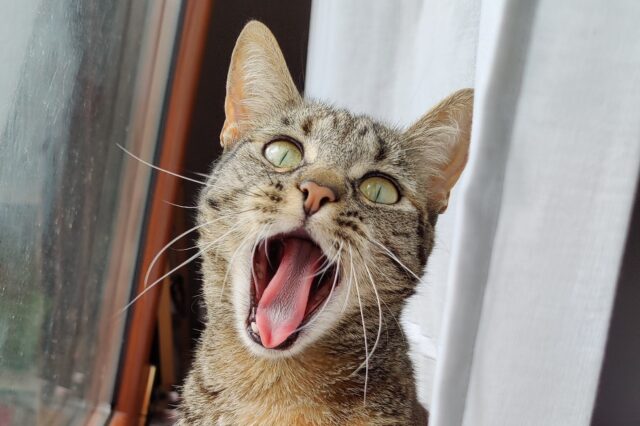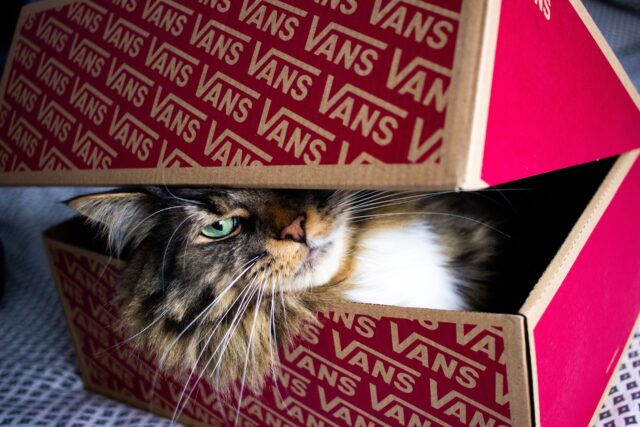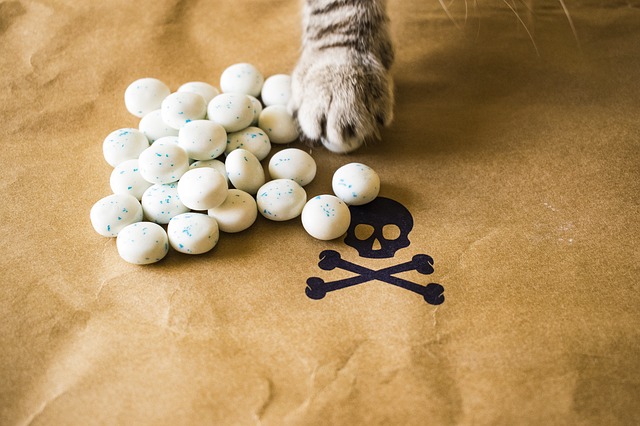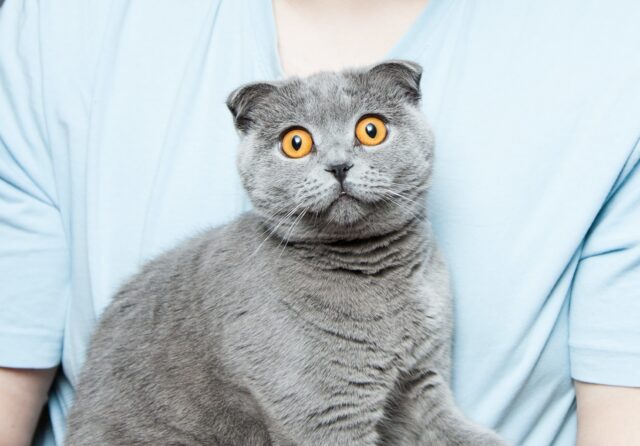Cats are very stoic creatures, preferring to keep their aches and ailments to themselves. Some kitties are capable of masking the symptoms of illness until their situation becomes an emergency. This, combined with the many misconceptions about proper feline health care, means that our cats don’t always get the essential treatment they need.
Here, veterinarians offer their tips on everything from proper diet to grooming. They also address some of the most common mistakes and dangerous habits that could put your kitty’s health at risk.

1. Chonky cats are cute, but obesity is no joke.
Fat cats make for adorable social media content, but according to veterinarian and author Ruth MacPete, allowing your cat to become overweight is anything but “cute.” In fact, it’s a surefire way to compromise their health.
“Just like with people, obesity in pets can lead to diabetes, heart problems, and arthritis,” says MacPete.
As cats gain weight, adipose (fat) cells produce dozens of inflammatory cytokines that increase the risk of diabetes, heart disease, joint disease, and even cancer.
While there is no magic cure, diet and exercise can help stave off or even reverse the effects of excess fat. MacPete recommends visiting your vet before making any diet or lifestyle changes. He or she will rule out a medical cause for your cat’s weight gain and help you establish a healthy diet and exercise regime.
2. Free-feeding your cat is a dangerous habit.
Everyone knows cats can be finicky, but free-feeding is certainly not the answer. Not only does keeping the food bowl full encourage picky behavior, but it also inspires your cat to graze throughout the day. All those extra calories can add up to big trouble, says veterinarian veterinary consultant for DogLab, Sara Ochoa.
“By free-feeding your cat, you’re increasing the likelihood that they will get fat. Always measure your cat’s food and give them the appropriate amount.”
If your schedule makes it difficult to stick to a feeding schedule, Ochoa recommends investing in an automatic feeder.

3. The serving amounts on cat food packages are not trustworthy.
Dr. Ochoa also notes that when it comes to commercial cat food, sometimes less is more.
“The suggested amount on the back of the food bag is always too much. Feed your pet just slightly lower than what is on the bag of food,” she recommends.
Unless your vet has given you specific feeding instructions, erring on the lower side of the label’s recommendations is perfectly safe and can help stave off obesity.
RELATED: Cooking For Kitty: The Benefits Of Homemade Cat Food
4. Dry kibble won’t help keep your cat’s teeth clean.
Brushing your cat’s pearly whites may seem like an impossible task, but unfortunately, dry kibble isn’t the solution. As Geoff DeWire, chief veterinarian at PrettyLitter, reports, dry food doesn’t do much for your cat’s teeth.
“Cats possess carnivore dentition and have fewer premolars and molars than dogs, which means they chew less and mostly swallow the kibble whole. Dry kibble does not act like a toothbrush,” said DeWire.
5. Proper dental care can benefit your cat’s overall health and potentially prolong their life.
Dental health is still an important part of your cat’s overall well-being, so be sure to discuss your options at your cat’s next vet visit.
“Dental disease in pets can lead to serious health issues like kidney, heart, and liver disease. In fact, most pets have dental disease by the time they are three to four years old,” says Travis Arndt, veterinarian, and director of the Humane Society of Missouri’s Animal Medical Center of Mid-America.
Regular brushing at home can help stave off dental disease, but nothing beats a professional dental cleaning performed by a veterinary professional. Your cat is safely placed under anesthesia, allowing the vet to thoroughly inspect and clean their teeth and gums, including below the gum line, where most dental disease hides.
RELATED: 3 Important Reasons Why Your Cat’s Dental Health Matters

6. Coughing up hairballs is not normal for a cat.
Cats are often depicted in cartoons coughing up hairballs. Naturally, we’ve been conditioned to see it as normal behavior, just another aspect of having a cat. But Dr. Ochoa explains that frequent hairballs should not be a part of your cat’s life. They indicate your cat is either swallowing too much hair while grooming or their digestive system cannot process the small amount of hair cats typically swallow.
“There are special diets and supplements that you can give to help decrease hairballs. Brushing your cat daily will also help decrease the amount of hair they take in while grooming,” Ochoa says.
Frequent hairballs may also indicate your cat is shedding excessively due to an allergy or skin ailment. If your cat regularly coughs up hairballs, see your vet for a dermatological exam as well as diagnostic tests to assess their gastrointestinal health.
7. Frequent vomiting is a sign of something more serious than just a “sensitive stomach.”
Just as hairballs are a sign of a deeper problem, frequent vomiting or regurgitation of food is also abnormal for cats, according to Dr. Ochoa.
Many cat parents assume frequent vomiting is a sign of a sensitive stomach, but it could be something more serious. It’s important to consult your vet to get to the root of the issue.
“Sometimes this may just be due to hairballs, but there are diseases and medical conditions that can cause your cat to vomit that need to be addressed,” says Ochoa.
RELATED: Hacking Up The Info You Need Regarding Hairballs & Vomiting

8. Yes, your cat does need those booster shots.
Even indoor cats need vaccination boosters. A single shot when they are eight weeks old is not enough to give your kitten lifelong immunity against dangerous infectious diseases.
“The truth is that most vaccines need ‘booster’ shots in order to be effective. It is important that people don’t make the mistake of assuming their new pet is protected just because they were vaccinated one time at the shelter,” says Dr. MacPete.
She recommends keeping a record of your cat’s vaccination history and discussing their personal risk factors—indoor/outdoor status, boarding, etc.—with your veterinarian.
Related: Inventor Creates the First AI Veterinarian App
9. One litterbox is never enough.
Cats are very clean and very private when it comes to their personal “business.” If your cat is peeing or pooping outside their litter box, it could indicate a health problem. Or, it could simply mean your household needs an additional litter box.
“You should always have more litter boxes than you do cats,” says Amanda Landis-Hanna, a veterinarian with PetSmart Charities. “For example, if you have one cat, make sure you have at least two litter boxes.”

10. A quality cat carrier is worth the investment.
As a former veterinary technician, I have seen cat parents bring their kitties to the vet in laundry baskets, pillowcases, and even shoe boxes! Do your cat a favor and invest in a comfortable, high-quality carrier. Even if you typically only visit the vet twice a year, don’t forget that emergencies can happen.
“Opt for a carrier that is hard plastic and is large enough for the cat to turn around and lay down comfortably,” says Dr. Arndt. “It is also important to choose a carrier that opens from the side and from the top.”
Carriers that open from the top allow veterinary staff to perform parts of the exam without removing the cat from their carrier. Your kitty will thank you for providing a safer, lower-stress experience!
11. Don’t forget to cat-proof your vertical spaces.
Felines naturally seek out higher ground when feeling vulnerable or stressed, so don’t forget to kitty-proof these spaces, too.
“Cats enjoy vertical spaces, including climbing curtains and jumping on top of electronics or appliances,” says Dr. Landis-Hanna. “It’s important to make sure all electronics and shelved objects are secure and can’t fall on your pet.”
Look for free-hanging cords, tassels, or fabric strips that could trip up a climbing kitty. Landis-Hanna recommends getting a cat tree or other safe vertical climbing structure. Placing it near a window with a view is an added bonus.
RELATED: 12 Extraordinary Cat Trees You Can Make Yourself

12. It’s cheaper to pay for preventative measures than major treatments.
Benjamin Franklin once said, “An ounce of prevention is worth a pound of cure,” and it remains true to this day. Many cat parents find annual vet appointments to be shockingly expensive. They may even skip them, thinking their cat “seems healthy enough.” But as Dr. MacPete points out, preventive care can save you plenty in the long run.
“Many pet parents try to save money by skipping annual exams or other preventive treatments,” said MacPete. “It is far more cost-effective to vaccinate your pet against a virus than to risk having your pet become infected and then spend hundreds of dollars treating the disease.”
13. Indoor cats can get fleas and ticks.
Just like infectious diseases, fleas and ticks have a way of finding indoor cats just as they do outdoor ones.
“Cats can get fleas and ticks even if they do not go outside. Your dog can bring fleas and ticks inside and give them to your cat. Because of this, be sure to also keep your cat on flea and tick medication,” says Dr.Ochoa.
Not to mention, fleas can cause itchy skin reactions and tapeworms. Ticks are even more dangerous, carrying potentially life-threatening diseases.

14. Even though cats groom themselves, they still need help once in a while.
Many cat parents assume their kitties are self-sufficient in the grooming department. While many are, others could use an extra paw from time to time. As cats age, the bending and stretching required to fully groom themselves become more difficult. Obese kitties also have trouble reaching areas such as their tail base and potty regions.
If you notice your cat looks greasy or unkempt, it may be time to step in. Excessive dandruff and itchy skin, especially around the tail base, are also signs of a kitty in need of grooming intervention.
RELATED: Ask A Groomer: 4 Tips For Grooming Your Cat At Home
15. Never give your cat “human” medication without consulting your vet.
Your kitty processes drugs very differently than you and even your dog. Some medications that are perfectly safe and beneficial for you can be fatal for your cat.
“Giving a cat medication for people can be deadly. Cats do not tolerate medication like dogs do and need special consideration when prescribed medications,” warns Dr. Ochoa.

16. Breathing troubles may look like simple nausea in cats.
Between 1% and 5% of cats suffer from asthma. While the condition is treatable, many cats with breathing difficulty go undiagnosed because their coughing and gagging are mistaken for nausea.
“Lots of cat owners confuse a cough with an attempt to vomit up a hairball. If your cat acts like it is vomiting by stretching its neck out, but nothing is produced, ask your veterinarian to assess your cat for lower-airway disease,” Dr. DeWire says.
17. Cats exhibit pain differently than humans.
Pets are extremely good at masking the signs of pain, and cats are even more talented actors than dogs. That’s why it’s important to know the ways in which cats give away their discomfort.
“When pets are vocal about pain, it is usually a sign that it is severe. Other signs of pain include behavior changes, excessive grooming, changes in eating and drinking, and guarding behavior,” says Dr. Arndt.
If you are concerned about your kitty, keep a close eye on their eating habits, behaviors, and patterns. If anything seems off, consult your veterinarian right away. Many painful medical conditions can be treated if caught early enough.
RELATED: Learn How To Take Your Cat’s Vital Signs

18. Cats and dogs have different needs.
Cats and dogs are often lumped together in the same sentence, but biologically and behaviorally, they are quite different animals.
“Many people treat their cat as if it is a small dog, but this is incorrect. Cats have many different requirements than dogs. For example, your cat will sleep much more and need a different type of diet than your dog,” says Dr. Ochoa.
If you share your home with both dogs and cats or are used to caring for dogs only, be sure to read up on proper cat care. Remember, your vet and their staff are there to help.
19. Even if your cat seems healthy, they should still see the vet at least twice a year.
You’ve heard it before, but it bears repeating. Cats age faster than humans, and with their stoic, secretive nature, medical conditions can go unobserved. The average indoor cat lives to be 10 – 15 years old, but many kitties last well into their twenties with excellent care.

